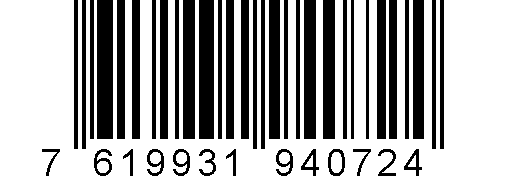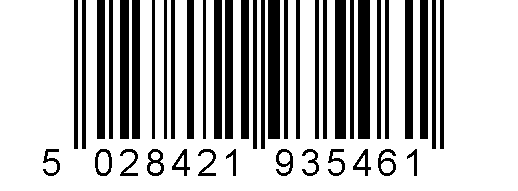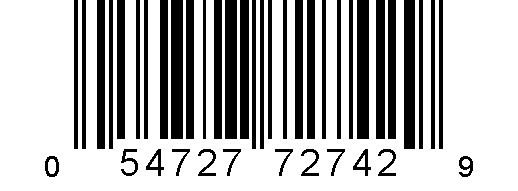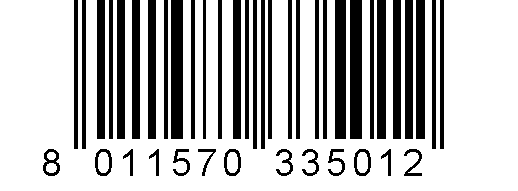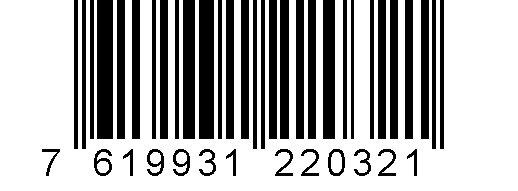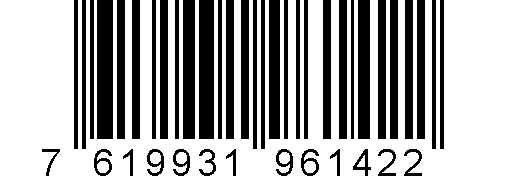Recorder Music
Early Recordings with Maurice Steger
Media Review / Listening Diary 2014-01-31
2014-01-31 — Original posting (on Blogger)
2014-11-10 — Re-posting as is (WordPress)
2014-11-21 — Added missing references to alternative recordings of Domenico Scarlatti’s Sonata K.87
2016-07-16 — Brushed up for better readability
Table of Contents
- CDs with Recorder Music
- Maurice Steger / An Italian Ground
- What’s on the CD
- 1. Anonymous: Division on a Ground ( 3’19” )
- 2. Anonymous: Readings Ground ( 1’35” )
- 3. Giovanni Battista Fontana (1571 – 1630): Sonata 6 ( 6’17” )
- 4. Alessandro Piccinini (1566 – 1638): Toccata VI ( 3’06” )
- 5. Francesco Rognoni Taeggio (? – 1626): “Vestiva i Colli” ( 4’19” )
- 6. Giovanni Paolo Cima (1570 – 1622): Sonata in D minor ( 4’30” )
- 7. Tobias Hume (1569 – 1645): “A Soldiers Resolution” ( 4’58” )
- 8. Matthew Locke (1621 – 1677): Suite No.3 in D major ( 7’20” )
- 9. Antonio Vivaldi (1678 – 1741): “Il pastor fido”, op.13, Sonata No.6 ( 7’59” )
- 10. Domenico Scarlatti (1685 – 1757): Sonate K.87 in B minor ( 3’54” )
- 11. Giuseppe Sammartini (1695 – 1750): Sonata in G major, op.XIII, No.4 ( 12’31” )
- 12. Robert Carr (? – 1686): “An Italian Ground” ( 4’20” )
- Recommendation
- Related CDs (Domenico Scarlatti)
- Fontana, Played by the Icarus Ensemble
- An English Collection — Maurice Steger
- An English Collection
- What’s on the CD
- 1. George Frideric Handel (1685 – 1759): Sonata in F major, op.1/11, HWV 369 ( 7’41” )
- 2. A Jacobean Masque (Collected by Sir Nicolas Le Strange, ca. 1624), Part I ( 9’59” )
- 3. George Frideric Handel (1685 – 1759): Sonata II in F major, HWV 375 ( 8’48” )
- 4. John Hilton the younger (1599 – 1657): 3 Fantasies in three parts ( 8’12” )
- 5. A Jacobean Masque (Collected by Sir Nicolas Le Strange, ca. 1624), Part II ( 7’14” )
- 6. Matthew Locke (ca. 1622 – 1677): Suite IV in E minor, from “Consort of two parts for several friends” ( 7’18” )
- 7. Giuseppe Sammartini (1695 – 1750): Sonata in A minor, op.II, No.6 ( 13’25” )
- 8. Henry Purcell (1659 – 1695): A New Ground in E minor, ZT 682 ( 4’01” )
- Recommendation
CDs with Recorder Music
This is one of a short series of posts dealing with recorder music that I ripped last summer/fall, when my job didn’t leave me much time to deal with extensive comparisons. In this case, this is about a first set of two out of four CDs that I purchased after Maurice Steger gave a concert here in Uster. Here’s the first one, “An Italian Ground”, issued in 1994, along with two CDs that I pulled up for comparison of specific tracks:
Maurice Steger / An Italian Ground
An Italian Ground — Baroque Instrumental Music in the Italian Style
Maurice Steger, recorder
Naoki Kitaya, Brian Feehan, Lorenz Duftschmid
claves records CD 50-9407 (CD, stereo); ℗ / © 1994

The CD “An Italian Ground — Baroque Instrumental Music in the Italian Style” was recorded in 1994. It features Maurice Steger (*1971), one of today’s most prominent recorder artists. Steger studied with Matthias Weilenmann (1956 – 2023) in Zurich, Jeanette van Wingerden (NL) and Pedro Memelsdorff (I), and later / finally with Kees Boeke (NL). Today, Steger lives in Zurich, Switzerland.
Maurice Steger’s Recorders
- Maurice Steger, Recorders (tuned to a’ = 415 Hz, unless noted otherwise):
- soprano recorder in c” by A. Schwob, Wolfenschiessen, Switzerland, based on early baroque models
- soprano recorder in c” by H. Nieuwland, Baard, NL, Ganassi type
- alto recorder in g’ (a’ = 466 Hz) by H. Nieuwland, Baard, NL, Ganassi type
- alto recorder in f’ by H. Nieuwland, Baard, NL, after Johann Christoph Denner
- alto recorder in f’ by T.M. Prescott, Hanover, USA, after Peter I. Bressan
- tenor recorder in c’ (a’ = 466 Hz) by A. Schwob, Wolfenschiessen, Switzerland, Ganassi type
The “Ganassi type” recorders are newly developed instruments based on / evolved from a Renaissance recorder that is on display in a museum in Vienna.
Other Musicians and Their Instruments
The continuo and the few solo tracks are played by Steger’s companions and friends,
- Naoki Kitaya (*1960, Tokyo) studied with NikolausHarnoncourt, and later harpsichord with JohannSonnleitner (Zurich) and with AndreasStaier (Basel); he now is teaching continuo in Zurich.Kitaya is playing
- chest organ by Bernhard Fleig, Basel, Switzerland, based on baroque models,
- Italian harpsichord by Bernhard Fleig, Basel, Switzerland, after an anonymous instrument from 1693
- German harpsichord (2 manuals) by N. Macheret, Bulle, Switzerland, after Christian Zell
- German harpsichord (1 manual) by B. Kennedy, Amsterdam, NL, after Michael Mietke
- Brian Feehan (theorbo) studied with Eugen M. Dombois and Hopkinson Smith (Schola Cantorum Basiliensis) and is/was a member of Sigiswald Kuijken’s “La petite Bande”, Jordi Savall’s “Hesperion XX” and Philippe Herreweghe’s “La Chapelle Royale”. Feehan is playing an instrument by M. Durvie, Paris, France, after Matteo Sellas.
- Lorenz Duftschmid (viola da gamba, violone) is/was a member of JordiSavall’s “Hesperion XX” and “La CapellaReial” and “Le Concert des nations”. Duftschmid is playing historic instruments:
- 6-string viola da gamba (Brescia, around 1580)
- 7-string basse de viole (Nicolas Bertrand, Paris, 1699)
- a violone from around 1600
What’s on the CD
And here’s the program of that CD, with the respective instruments used in this recording, along with some remarks:
1. Anonymous: Division on a Ground (3’19”)
Taken from the collection “The Division Flute, A Collection of Divisions upon Several Excellent Grounds” (London, 1706), by an anonymous composer, a piece “Division on a Ground“
Instruments: tenor recorder in c’, chest organ, theorbo, basse de viole
A ground, i.e., a Passacaglia-type composition, here on a short (essentially 8-tone) basso melody, beautifully displaying the warm sound of a tenor recorder, with suitable accompaniment, equally full and warm-sounding.
2. Anonymous: Readings Ground (1’35”)
From the same collection, also by an anonymous composer: Readings Ground
Instruments:soprano recorder in c”, Italian harpsichord, theorbo, violone
Another ground (on a 4-tone basso ostinato) — but totally different in character. It is rather a wild Napoletan Tarantella, interspersed with musette-type episodes, charming, chilling. This is an early hit, most likely, similarly to pieces composed by Johann Hieronymus Kapsberger (ca. 1580 – 1651).
3. Giovanni Battista Fontana (1571 – 1630): Sonata 6 (6’17”)
This is taken from “Sonate a 1, 2, 3, per il Violino o Cornetto, Fagotto, Chitarone, Violoncino o simile altro istromento”, Venice, 1641
Instruments:soprano recorder in c” (Ganassi), Italian harpsichord, theorbo, viola da gamba
This music is almost a century older than the first two pieces, hence played on a recorder that is close to the models used in pre-baroque times. Fontana was pretty open about the instrument to be used. The recorder seems a good choice for this sonata (a sonata a 1 with accompaniment), consisting of a sequence of fast and slow sections, giving the artist ample opportunity to add ornaments, short cadenzas, very nicely played!
I have this sonata also played with a violin as solo instrument, by the Icarus Ensemble, see below for details.
4. Alessandro Piccinini (1566 – 1638): Toccata VI (3’06”)
A composition from “Libro Primo, Intavolatura di Liuto, et do Chitarrone”, Bologna, 1623
Instrument:theorbo
A nice, short interlude on a full-sounding theorbo — darker than a lute, with the obvious added resonance and tonal range through the long bass strings.
5. Francesco Rognoni Taeggio (? – 1626): “Vestiva i Colli” (4’19”)
A piece from “selva di varii passaggi secundo l’uso moderno…”, Milan, 1620
Instruments:alto recorder in g’ (Ganassi), chest organ, theorbo
Compared to the baroque pieces on the CD, this clearly sounds older, maybe more archaic. The sound of the recorder is more straight, “open” — a nice contrast, for sure!
6. Giovanni Paolo Cima (1570 – 1622): Sonata in D minor (4’30”)
A composition written in Milan, 1610
Instruments:tenor recorder in c’, chest organ, theorbo, viola da gamba
Another nice, gentle pre-baroque piece, this time on tenor recorder.
7. Tobias Hume (1569 – 1645): “A Soldiers Resolution” (4’58”)
From the collection “Musical Humors”, London, 1605
Instrument:basse de viole
A real fun piece for solo viol, telling a little story in the life of a soldier, with sections labeled “Resolution — Counter March — Ayre — Cettil drum — Trumpets — Palmel — March away“, often very illustrative, reminding of the famous battle pieces of the time, such as by Janequin and others.
8. Matthew Locke (1621 – 1677): Suite No.3 in D major (7’20”)
This is from “Consort ffor seaverall ffreinds”
Instruments:soprano recorder in c”, chest organ, Italian harpsichord, theorbo, basse de viole
This is a suite in five movements “Fantazie — Pavan — Ayre — Courante — Saraband“. The only commonality with the baroque (French) suite appears to be the the last pair of movements. Even among these two, only the Courante is what one expects (a fast movement in 3 beats). The last movement has nothing in common with the slow movement in the French / baroque Sarabande: this is the fast “Saraband” in the pre-baroque, Spanish / Napoletan tradition, very short, almost like a Tarantella in character (6/8 or 3/8) — very nice and fun!
9. Antonio Vivaldi (1678 – 1741): “Il pastor fido”, op.13, Sonata No.6 (7’59”)
This is a sonata from “Il Pastor fido, Sonates pour la Musette, Viele, Flûte, Hautbois, Violon, avec la Basse Continüe”, op.XIII, Paris, 1737
alto recorder in f’ (Denner), chest organ, theorbo, basse de viole
A “sonata da chiesa” with the four movements Vivace — Fuga da capella — Largo — Allegro; the fugue (second movement) is in two voices, whereby the bass voice switches between fast figures and the fugue theme. The last movement is a fast, virtuosic piece, especially for the recorder, but also for the continuo. this sonata was published in 1737, in Paris (hence the strange title of the collection) — not by Vivaldi; the sonata is likely not entirely by Vivaldi, but partly adapted (by Jean-Noël Marchand) from other compositions by Vivaldi.
10. Domenico Scarlatti (1685 – 1757): Sonate K.87 in B minor (3’54”)
Instrument:German harpsichord (2 manuals)
This is not one of the virtuosic, extroverted sonatas from this composer, but a rather contemplative piece. I have this also in other interpretation, as part of Pieter-Jan Belder‘s complete recording of all Scarlatti sonatas (third CD listed above, recorded in 2001), as well as with Andreas Staier (recorded 1991, see above), and with Ottavio Dantone, recorded in 1997. All these recordings were summarized in my Listening Diary 2012-09-29.
When comparing these recordings, Belder‘s interpretation (on an Italian harpsichord after Giusti, see the CD entries below) appears slightly rushed, the sound slightly more coarse; also, Belder uses arpeggiando articulation almost throughout, and this arpeggiando to me is too ubiquitous, too uniform & conspicuous.
Alternative Recordings
Kitaya‘s interpretation is calm and contemplative — I prefer that version over Belder’s. Also, Kitaya’s interpretation stands out with its subtle agogics, and the more subtle and differentiated use of arpeggiando articulation. Belder is noticeably faster (yet less interesting!), but he repeats both parts, so overall, his interpretation is longer (4’30”) than Kitaya’s. Belder plays at 1/4 = 102, Kitaya at 1/4 = 86.
Now, if we turn to Staier (see again below), we hear this played at 1/4 = 74 (duration: 6’10”, with both repeats), and all of a sudden, this is not just a quiet sonata, but a really contemplative one: I prefer this over both Belder and Kitaya.
Finally, Dantone (also here see below) goes even further, playing it with 1/4 = 64 (duration 7’28”, both parts repeated). In my opinion, this is taking it too far, as Dantone only manages such a slow tempo by overloading the sonata with excessive arpeggiando and extra ornamentation (that is not really needed in this piece), causing the music to lack flow. It sounds as if Dantone tried imitating what pianists can do with this sonata on a modern concert grand: Yuja Wang (*1987) has played this in her concerts with a lot of depth and expression (more than a harpsichord can do) — but even she played at around 1/4 = 78 (duration 3’06”, without repeats).
11. Giuseppe Sammartini (1695 – 1750): Sonata in G major, op.XIII, No.4 (12’31”)
Instruments:soprano recorder in c”, German harpsichord (1 manual)
Giuseppe Baldassare Sammartini may be less known than his younger brother Giovanni Battista Sammartini (1700 – 1775); he was born in Milan, but spent most of his life in London, with Frederick, the Prince of Wales. Adapted to the late baroque style of composition, this virtuosic sonata (exploring the top end of the tonal range of the recorder!) is the only piece on this CD where the accompaniment is done with harpsichord alone (cembalo obbligato). The sonata has four movements: Andante — Allegro — Adagio — Minuetto (the Minuetto is a clear sign of the late baroque style in this sonata).
12. Robert Carr (? – 1686): “An Italian Ground” (4’20”)
This is from the same collection as the first two pieces
Instruments:alto recorder in f’ (Bressan), chest organ, theorbo, basse de viole
The recording closes with another ground: the title of the entire recording was taken from this piece — a Passacaglia on a 8-tone ostinato bass.
Recommendation
If you like early baroque music, I can definitely recommend this CD — you will like it, and you will not be bored! Steger’s playing is virtuosic, play- and joyful, featuring very little vibrato (which I really like!).
Related CDs (Domenico Scarlatti)
Pieter-Jan Belder: Domenico Scarlatti, Complete Sonatas
Domenico Scarlatti: Complete 555 Keyboard Sonatas
Pieter-Jan Belder (Harpsichord, fortepiano, organ)
Brilliant classics 93546 (36 CDs, stereo, recording 2000 – 2007)

Andreas Staier: Domenico Scarlatti, Sonatas vol.II
Domenico Scarlatti: Sonatas, Vol.II
(Sonatas K.64, 87, 96, 132, 133, 175, 202, 213, 214, 263, 264, 277, 278, 420, 421, 460, 461)
Andreas Staier (harpsichord)
deutsche harmonia mundi 05472 77274 2 (CD, stereo); ℗ / © 1992

Ottavio Dantone: Domenico Scarlatti, Complete Sonatas vol.2
Domenico Scarlatti: Complete Sonatas, vol.2, “The Italian Manner”
(Sonatas K.37, 43, 46, 51 – 54, 56, 59 – 61, 63, 67, 69, 77, 87)
Ottavio Dantone (harpsichord)
Stradivarius STR 33501 (CD, stereo); ℗ / © 2000

Fontana, Played by the Icarus Ensemble
Giovanni Battista Fontana: Sonate a uno, due e tre
Icarus Ensemble
claves records CD 50-2203 (CD, stereo); ℗ / © 2002

Icarus Ensemble: Giovanni Battista Fontana (1571 – 1630)
On the Ensemble
The Icarus Ensemble is one of several groupings with that name (the Google top results included at least three unrelated entities. Besides the one on this CD, there is a chamber orchestra founded in 1994, operating out of the Teatro di Reggio Emilia, Luzzara, Italy. There is another one, a Jazz formation, founded in 2007 in Indianapolis, IN). The Icarus Ensemble on this CD was founded in 1991 and released two CDs: a first one, released in 1999, “Flights of Fancy, Early Italian Music on Original Instruments” (Claves Records CD 9817), plus the one listed above, which appeared in 2002. I did not perform an extensive search, but did not find any prominent, recent traces of this formation, except for the page at Claves Records — the ensemble may no longer exist. The ensemble comprises
- Hilde de Wolf, recorders
- David Rabinowich, baroque violin
- David van Ooijen, bass lute and chitarrone
- Ursula Dütschler, organ positive, harpsichord
Comments on the Recording
I really like their recording of a selection (#1 – #8, #11, #14, #15, #17) of Fontana’s “Sonate a 1, 2, 3, per il Violino o Cornetto, Fagotto, Chitarone, Violoncino o simile altro istromento” (Venice, 1641); sonata #6 is played on the violin, with harpsichord accompaniment — a nice interpretation.
A comparison to piece #3 in Steger’s recording above is somewhat unfair, as that features a much richer accompaniment with theorbo and viola da gamba in addition to the harpsichord. Plus, the violin is totally different in character; in particular, ornaments and articulation are simply not comparable, and Rabinowich also uses some violin-specific ornaments. On the other hand, here, sonata #6 should be viewed in the (much narrower) context of the other Fontana sonatas on this Fontana-only CD.
An English Collection — Maurice Steger
An English Collection
Maurice Steger, recorder
Naoki Kitaya, Continuo Consort
claves records CD 50-9614 (CD, stereo); ℗ / © 1996

… and here is the second CD with Maurice Steger, “An English Collection”, featuring compositions for recorder, issued in 1996:
An English Collection
In the two years since the initial recording above (“An Italian Ground”), Maurice Steger and Naoki Kitaya expanded their ensemble and the range of instruments they play, to now include
Maurice Steger’s Recorders
- Maurice Steger, Recorders (tuned to a’ = 415 Hz, unless noted otherwise):
- soprano recorder in c” (a’ = 466 Hz) by H. Nieuwland, Baard, NL, Ganassi type
- soprano recorder in c” by H. Nieuwland, Baard, NL, Ganassi type
- soprano recorder in c” by A. Schwob, Wolfenschiessen, Switzerland, based on early baroque models
- descant recorder in g’ (a’ = 440 Hz) by H. Nieuwland, Baard, NL, Ganassi type
- alto recorder in g’ by Stephan Blezinger, Germany, Ganassi type
- alto recorder in g’ by H. Nieuwland, Baard, NL, Ganassi type
- alto recorder in f’ by T.M. Prescott, Hanover, USA, after Peter I. Bressan
- voice flute in d’ by Adrian Brown, France, after Johann Christoph Denner
- voice flute in d’ by Hans Schimmel, NL, after Peter I. Bressan
- tenor recorder in c’ (a’ = 466 Hz) by A. Schwob, Wolfenschiessen, Switzerland, Ganassi type
Other Musicians & Their Instruments
- Naoki Kitaya, harpsichord and chest organ (instruments #1, #2, and #4 in the previous recording)
- Yasunori Imamura, theorbo and baroque guitar
- Guido Balestracci, viola da gamba
- Erich Bellocq, theorbo, renaissance lute and renaissance guitar
- Irene Müller-Glasewald, harpsichord (#2 as played by Naoki Kitaya)
- Roberto Sensi, violone
- Christian Sager and Irene Müller-Glasewald, percussion
Tuning either 415 Hz (Kirnberger III) or 440 Hz (mean-tone temperament tuning). Details on all instruments are found in the liner notes.
What’s on the CD
And here’s the program of that CD, with the respective instruments used in this recording, along with some remarks; the instrumentation is now much richer than in the first CD, and all pieces are played with recorder as primary voice:
1. George Frideric Handel (1685 – 1759): Sonata in F major, op.1/11, HWV 369 (7’41”)
Instruments:alto recorder in f’ (#7, Bressan); organ/harpsichord, 2x theorbo, viola da gamba, violone
(This will be discussed in a separate posting, dealing with Handel’s sonatas for wind instruments.)
2. A Jacobean Masque (Collected by Sir Nicolas Le Strange, ca. 1624), Part I (9’59”)
Instruments:soprano recorder in c” (#1, Ganassi, and #3, early baroque), alto recorder in g’ (#6, Ganassi), alto recorder in f’ (#7, Bressan); organ/harpsichord, 2x theorbo, guitar, lute, viola da gamba, violone, percussion
Court Masques were an entertaining mix of ballet/dance, play/pantomime that were arranged for the king — some apparently lasted 4 – 5 hours. Most details about Masques are lost, but the music was apparently collected from various contributors.
The collection in this recording (in two parts, see below) combines pieces from John Adson (1587 – 1640), Giovanni Coperario (1570 – 1626), Giles Farnaby (1563 – 1640), Robert Johnson (1583 – 1634), and Thomas Lupo the elder (1571 – 1627). There are also two pieces by anonymous composers. Part I features four compositions, “The Temple anticke” (anon.) — “Adson’s Ayre” (Adson) — “Gray’s Inn or Cuperaree” (Coperario) — “The L. Zouches Maske” (Farnaby). It’s a really entertaining mix (even within the various compositions), featuring anything from joyful, fast dance pieces, to calm, contemplative sections — well worth listening to!
3. George Frideric Handel (1685 – 1759): Sonata II in F major, HWV 375 (8’48”)
Instruments:voice flute in d’ (#8, Denner); harpsichord, theorbo, viola da gamba
(This will be discussed in a separate posting, dealing with Handel’s sonatas for wind instruments.)
4. John Hilton the younger (1599 – 1657): 3 Fantasies in three parts (8’12”)
Instruments:soprano recorder in c” (#2, Ganassi, and #3, early baroque), alto recorder in g’ (#5, Ganassi); organ, 2x theorbo, viola da gamba, violone
The “three parts” of course refers to 3 voices, not sections; a good fit to “A Jacobean Masque” in this recording: nice, entertaining pieces in rich instrumentation & sound.
5. A Jacobean Masque (Collected by Sir Nicolas Le Strange, ca. 1624), Part II (7’14”)
Instruments:soprano recorder in c” (#1, Ganassi), alto recorder in g’ (#5, Ganassi), tenor recorder in c’ (#10, Ganassi); organ/harpsichord, 2x theorbo, 2x guitar, lute, viola da gamba, violone, percussion
Part II features three compositions: “The Fairy Masque” (Johnson) — “The Nobleman” (anon.) — “The Lord Hays his Masque” (Lupo the elder); see Part I above for more comments.
6. Matthew Locke (ca. 1622 – 1677): Suite IV in E minor, from “Consort of two parts for several friends” (7’18”)
Instruments:descant recorder in g’ (#4, Ganassi); harpsichord
This is a suite in five movements: “Almand — Courante — Ayre — Saraband — Jigg, conclude thus“. On this CD, this is the only composition that is played with just recorder and harpsichord, and the only one featuring mean-tone tuning (all other tracks use more “modern” Kirnberger III tuning, see the posting “Progress in Tuning?“). Note that this is not the typical, baroque type of suite that one might expect: even though the movements appear to include Allemande, Courante, (Air), Sarabande and Gigue: the “Almand” is faster than the French/baroque type, the “Saraband” is a short, fast Napoletan/Spanish dance on 3 beats, while the “Jigg” is not in 3, but in 2 or 4 beats.
7. Giuseppe Sammartini (1695 – 1750): Sonata in A minor, op.II, No.6 (13’25”)
Instruments:soprano recorder in c” (#3, early baroque); harpsichord, 2x theorbo, viola da gamba, violone
This composer was already featured in the recording above, “An Italian Ground — Baroque Instrumental Music in the Italian Style”. He is Italian, but spent most of his life in London, so his music can equally be called English, as well as Italian (style). There are four movements: Adagio ma non tanto — Allegro — Andante — Allegro assai. As already the composition in earlier recording, this is a virtuosic sonata, here with a rich instrumentation in the continuo — except for the Andante, a very nice piece where the recorder is accompanied just by harpsichord and two theorbos. The sonata covers a wide tonal range — likely more (in the height) than a Ganassi type recorder could master.
8. Henry Purcell (1659 – 1695): A New Ground in E minor, ZT 682 (4’01”)
Instruments:voice flute in d’ (#9, Bressan); harpsichord, 2x theorbo, viola da gamba
The artists arranged this composition from a keyboard piece, whereby the recorder plays the right hand / melody voice, while the other instruments play the ground (a lamento bass, mostly featuring a falling scale) and the harmonic “filling”. A nice, calm / contemplative Passacaglia, closing this interesting collection!
Recommendation
The remarks on the previous recording apply here as well. If you like baroque and pre-baroque music, and/or artistic recorder playing, I can definitely recommend this CD. You will like it, and you will not be bored! Steger’s playing is virtuosic, play- and joyful, featuring very little vibrato (which I really like!). As Steger and Kitaya point out in the liner notes, the goal of these recordings is not, to present “100% accurate representations of baroque fossils”, but the attempt to allow the listener to experience this music (and the emotions which it expresses) in today’s cultural environment — I think they are doing pretty well in this!
Listening Diary Posts, Overview



